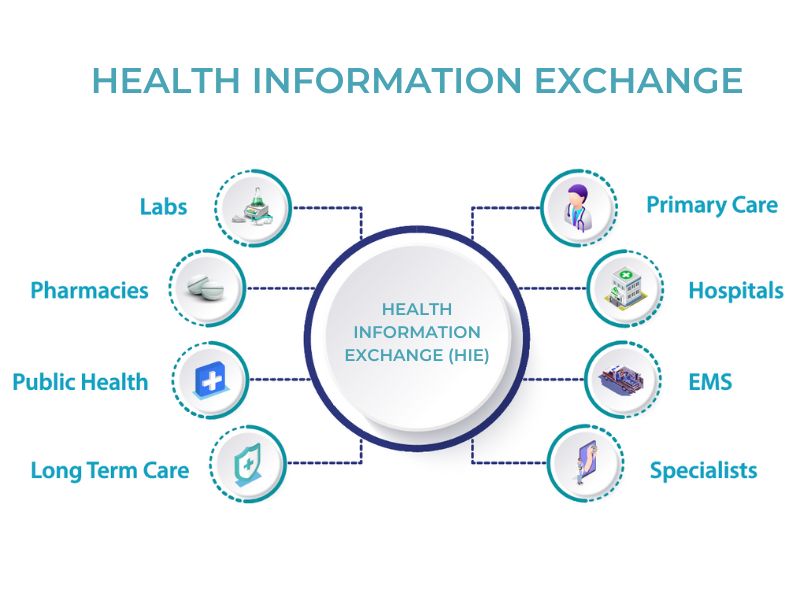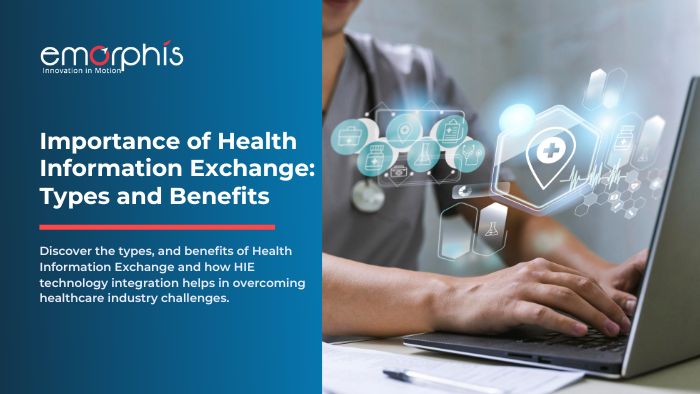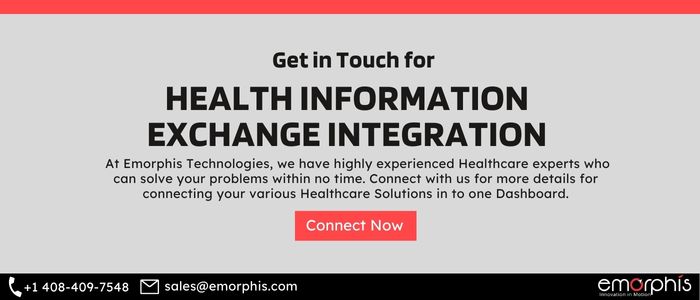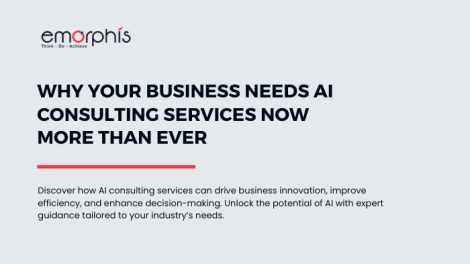Defining Health Information Exchange
So far, doctors and patients have always relied on analog information interchange when sharing medical information. HIE, which stands for Health Information Exchange, is developing faster over time. In fact, many service providers are now adopting this technology. It helps to allow digital access to patient records for improved medication and care management.
As a matter of fact, the healthcare sector relied on paper, fax, or email to transfer and create data for many years. With the health information exchange integration, the healthcare sector sees a considerable transformation. Also, with the development of modern technology and EHR and EMR integration, it is no longer necessary for patients or doctors to print documents, fax them, or email them to other departments.
To comply with auditory standards, HIE allows therapists, pharmacists, doctors, and also other stakeholders to access and share patient information across diversified networks. As a matter of fact, HIE makes robust interoperability possible by adhering to the data standards.
Health Information Exchange and healthcare integration also support accurate formatting of the patient's information attributes, which has been a problem for the healthcare sector up until now.
Patients have received uneven care till now, while proper care management requires seamless delivery of services and a care coordination approach. This inconsistent approach to medical care has proved detrimental regarding order duplication, medication errors, and also proper diagnosis. HIE has come to the respite of medical care professionals and provides continued access to medical information. In fact, it has the potential and ability to deliver high-quality care management. It also minimizes costs and time commitments on the part of the patient as well as the healthcare service provider.
A typical HIE includes:
- The medical history of a patient
- Details of the current medication the patient is going through
- The records of their medical and clinical results
- Some elements of the electronic health records
- The kind of immunizations the patient is subject to
- Past laboratory orders
- Details of any chronic disease and allergies of the patient
The Health Information Exchange integration's purpose is to make medical data easier. Also to obtain and reprocess to deliver patient-centered treatment that is safe, quick, more effective, and efficient.

Let us now understand the different types of HIE, their meaning, and their significance. This will also include the importance of health information exchange integration. And later we will also talk about the benefits the healthcare industry can realize by having HIE in place to overcome challenges.
Types of Health Information Exchange
There are three main categories of HIE depending on the technology and the use cases they enable. Though each type is compatible with the others, a few essential characteristics are unique.
1. Directed Exchange
Multiple healthcare professionals use a secure and encrypted network to share information directly. This information includes past and present medications. Also, test lab results, discharge summaries, and any other information of a similar nature. It is a “Directed Exchange”.
It is the most popular and widely used type of health information exchange. In fact, numerous public health organizations may use this direct interchange, negating paper records and documentation requirements. In addition, many electronic health records are integrated at once to give medical practitioners access to information. When transferring medical information, the guided exchange of health information is the most effective, efficient, and cost-effective method.
2. Query-based Exchange
This is widely used by healthcare providers and has proven effective, especially when a patient needs emergency care. This query-based exchange enables doctors to access historical records, medications, and other details for the networked medical care providers. Hospitals use “query-based exchange” in emergency services. And cannot offer crucial information due to their inability. Queries-based information exchange is "pull" based, whereas directed exchange is "push" based and shares information. Query-based information exchange recommends what happened at one entity or another. Some common examples of this type of information exchange include:
- To avoid needless duplication of medical tests. A doctor or physician caring for a patient in the emergency room can inquire about and request the patient's medical history. It can also be any radiology tests the patient may have undergone and other information.
- The usage of query-based information sharing is common in pregnancy-related situations. It is where the doctor can retrieve previous prescription history and prescribe updated medications. Thus, allowing them to give better care and pharmaceutical recommendations.
3. Consumer-Mediated Exchange
This kind of health information exchange enables users to access their vital data. Because it is consumer-mediated, as its name suggests. When information is shared in this way. The client has access to it and can push or pull it as needed at any time throughout therapy. However, the fundamental advantage of this information exchange is that patients have 24/7 access to it. They can easily update or alter their personal information as needed. With this method of information exchange, patients can:
- Share their medical history with their choice of care professional
- Check, validate and update their health information for any ambiguities
- Validate and correct any financial or billing-related opacities
- Monitor, track, and modify their healthcare routines
Let us take you through some of the key benefits of this technology.
Benefits of Health Information Exchange
Health Information Exchange technology is a lifesaver for many care management and healthcare service providers. By switching from paper-based or analog data management to its digital equivalent. By signing up for a feature-rich health information exchange integration, healthcare service providers have improved their daily operations. The following are some of the most significant advantages of integrating your services with a health information exchange:
A. Quick and quality treatment
You can give a patient, prompt, effective care if you have access to all their medical information. Which in fact includes current and previous prescriptions. You can deliver an excellent consultation without repeating the patient's most recent tests.
B. Reduction in errors
The two main areas of discomfort for every patient are repetitive testing prescriptions and incorrect disease diagnosis. By having the patient information on hand, you may considerably reduce the likelihood of errors by signing up with an effective HIE.
C. Improved communication
HIE significantly enhances departmental and hospital communication. You can considerably lower the likelihood of errors. And also as a matter of fact improve the client experience by having excellent departmental communication.
For more, click the link and check How to Simplify Clinical Communication and Collaboration with Healthcare IT Solutions?
D. Operational Cost optimization
By putting in place a digital information interchange. You can do away with the tedious paperwork and significantly lower your operating costs. With HIE in place, you can use less paper. In turn, it will increase the effectiveness of your services.
E. Enhanced patient involvement
Educating patients and involving them throughout their care cycle helps them recover much faster.
F. Efficient public health recording
During the COVID-19 pandemic, which has widespread impact and necessitated frequent public health reporting. Many service providers could efficiently and effectively record and also report public health through health information exchanges.
G. Healthcare interoperability
The most significant benefit HIE offers is healthcare interoperability and the ability to integrate with other medical care services.
Redox - An Answer to Healthcare Interoperability
The various forms of health information exchange and their potential benefits have been covered, but it is equally important to discuss the technology that makes healthcare interoperability possible. Redox, a cutting-edge health information sharing, and interoperability solution must be recognizable if you are an authority in the field and have investigated this technology.
When business operations use technology, there are minimal distractions, which is true in the healthcare industry. By giving patients more control over their healthcare experience. Redox integration revolutionizes interactions between patients and healthcare service providers. Redox connects products, providers, and payers using a single API. As a matter of fact, making producing and assembling data simple.
For more details on Healthcare Interoperability and Redox Integration check them here - A Comprehensive Guide to Healthcare Interoperability and Redox Integration
Conclusion
Health Information Exchange integration is one strategy that can assist you in getting the clinical workflow you desire and the patient outcomes you long for. A capable managed service provider can help realize the investments needed to create a healthcare information exchange. HIE is a complex process that integrates and involves many individuals, organizations, and stakeholders. However, looking at ways to improve data transmission and communication across a protected network is crucial. When due diligence is done in assessing the sustainability of your health information exchange, HIE must comply with regulatory organizations and healthcare software must be accredited.









